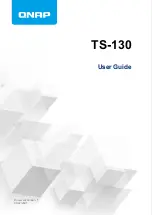
Cheetah 15K.7 SAS Product Manual, Rev. C
41
[1]
These values are subject to change.
Setting these retry counts to a value below the default setting could result in degradation of the unrecov-
ered error rate which may exceed the value given in this product manual. A setting of zero (0) will result in
the drive not performing error recovery.
For example, suppose the read/write recovery page has the RC bit set to 0, read retry count set to 4, and
the recovery time limit field (Mode Sense page 01, bytes 10 and 11) set to FF FF hex (maximum). A four
LBA Read command is allowed to take up to 253.11 msec recovery time for each of the four LBAs in the
command. If the recovery time limit is set to 00 C8 hex (200 msec decimal) a four LBA read command is
allowed to take up to 200 msec for all error recovery within that command. The use of the Recovery Time
Limit field allows finer granularity on control of the time spent in error recovery. The recovery time limit
only starts counting when the drive is executing error recovery and it restarts on each command. There-
fore, each command’s total recovery time is subject to the recovery time limit. Note: A recovery time limit
of 0 will use the drive’s default value of FF FF. Minimum recovery time limit is achieved by setting the
Recovery Time Limit field to 00 01.
10.3
SAS system errors
Information on the reporting of operational errors or faults across the interface is given in the
SAS Interface
Manual
. The SSP Response returns information to the host about numerous kinds of errors or faults. The
Receive Diagnostic Results reports the results of diagnostic operations performed by the drive.
Status returned by the drive to the initiator is described in the
SAS Interface Manual.
Status reporting plays a
role in systems error management and its use in that respect is described in sections where the various com-
mands are discussed.
10.4
Background Media Scan
Background Media Scan (BMS) is a self-initiated media scan. BMS is defined in the T10 document SPC-4
available from the T10 committee. BMS performs sequential reads across the entire pack of the media while
the drive is idle. In RAID arrays, BMS allows hot spare drives to be scanned for defects prior to being put into
service by the host system. On regular duty drives, if the host system makes use of the BMS Log Page, it can
avoid placing data in suspect locations on the media. Unreadable and recovered error sites will be logged or
reallocated per ARRE/AWRE settings.
Table 16:
Read and write retry count maximum recovery times [1]
Read retry
count
Maximum recovery time per LBA
(cumulative, msec)
Write retry
count
Maximum recovery time per LBA
(cumulative, msec)
0
51.87
0
23.94
1
59.85
1
35.91
2
203.49
2
39.9
3
231.42
3
51.87
4
295.26
4
79.8
5
327.18
5 (default)
107.73
6
359.10
7
446.88
8
538.65
9
570.57
10
598.50
11 (default)
1,534.97
















































